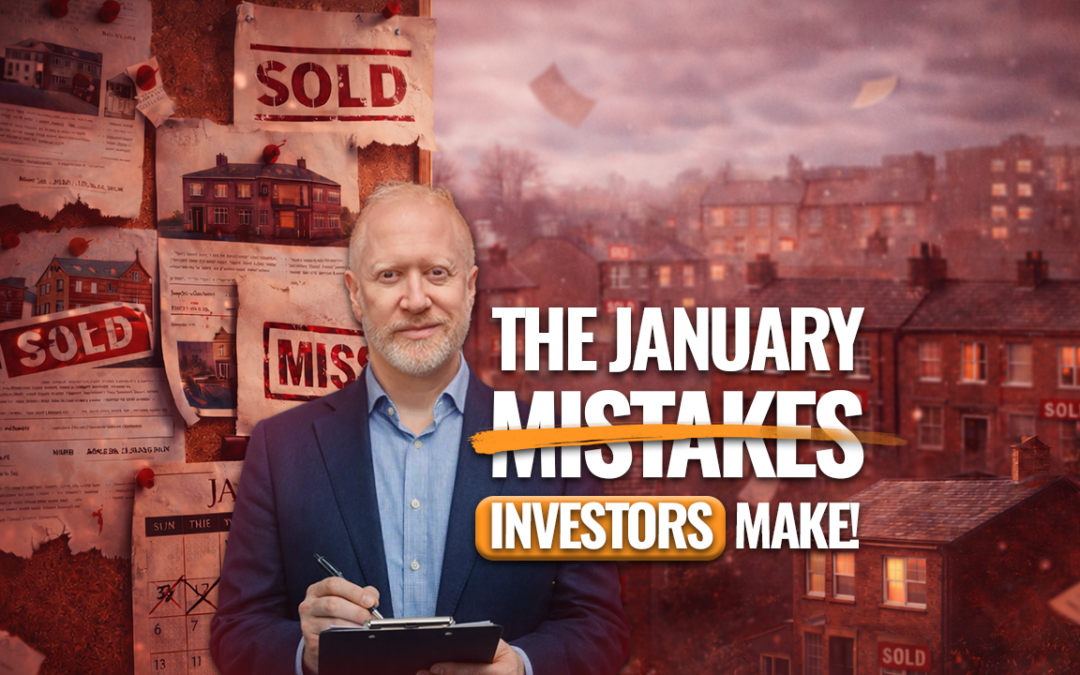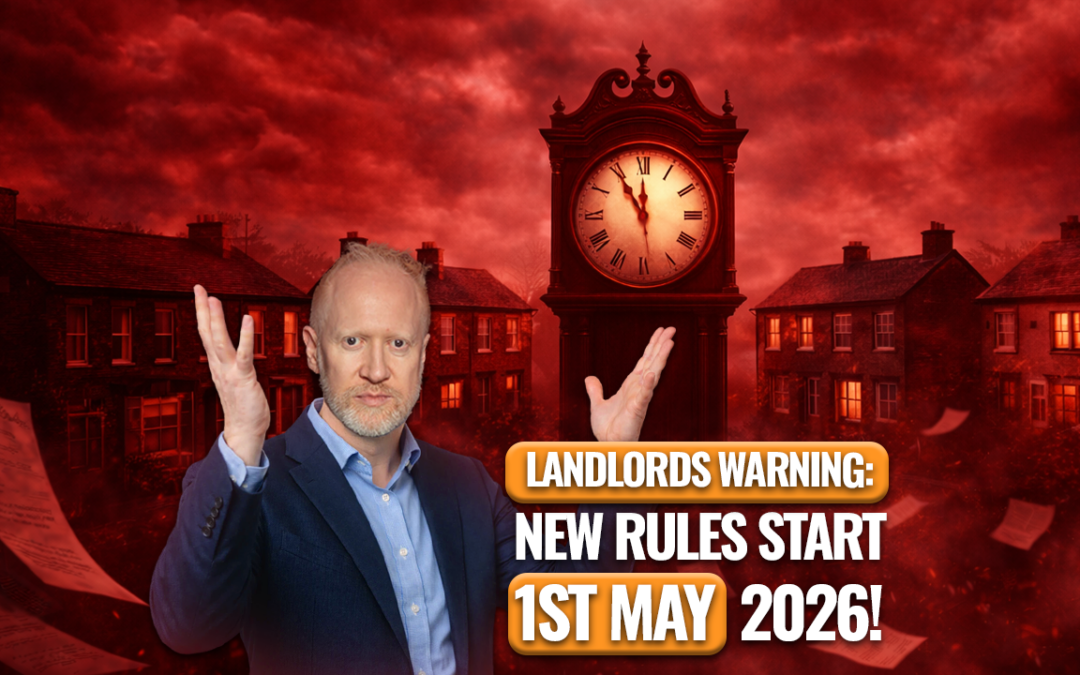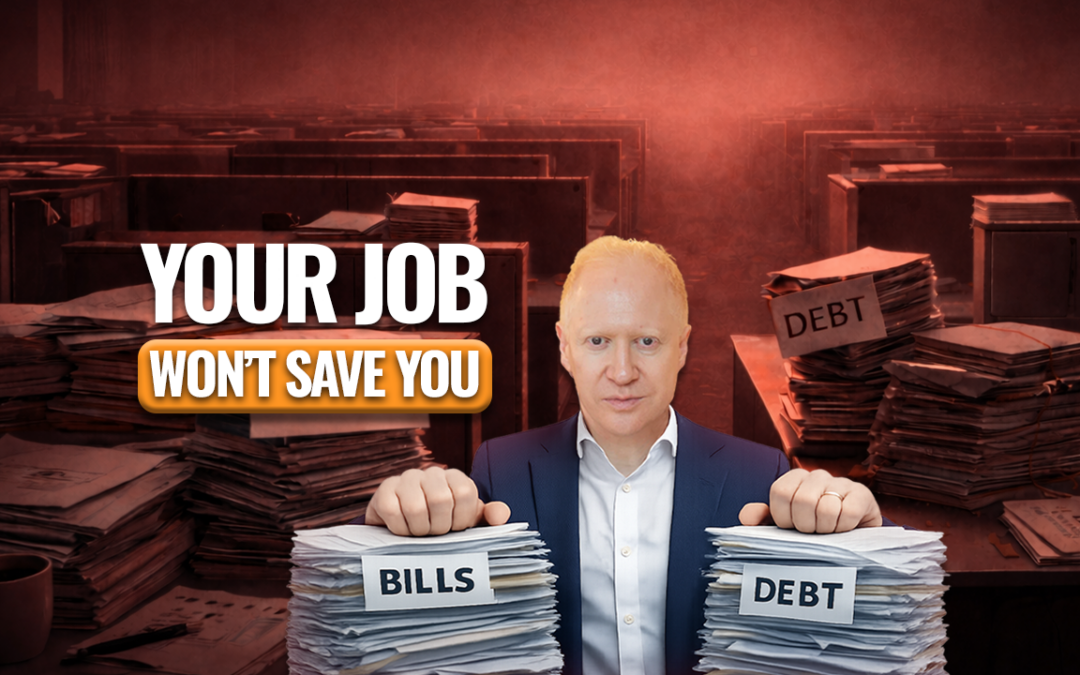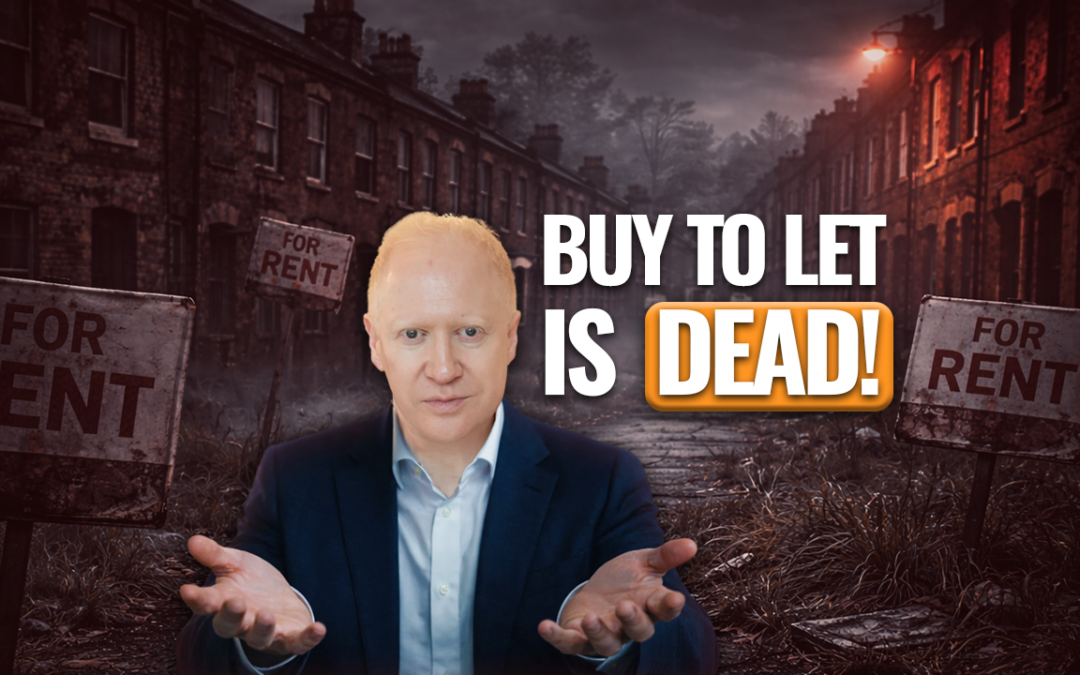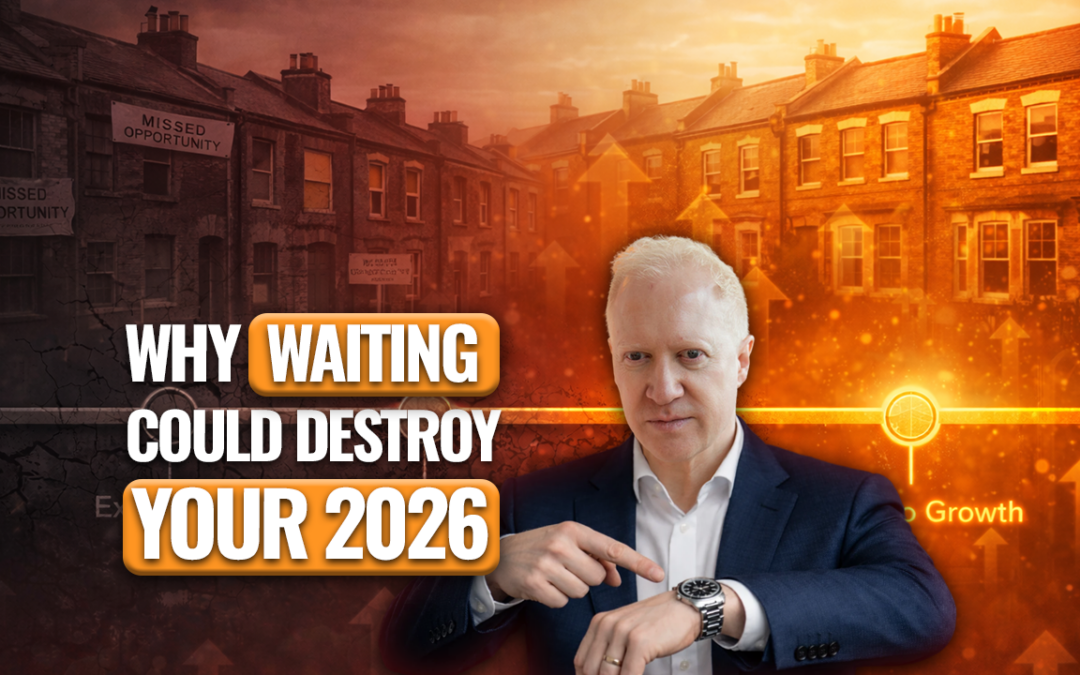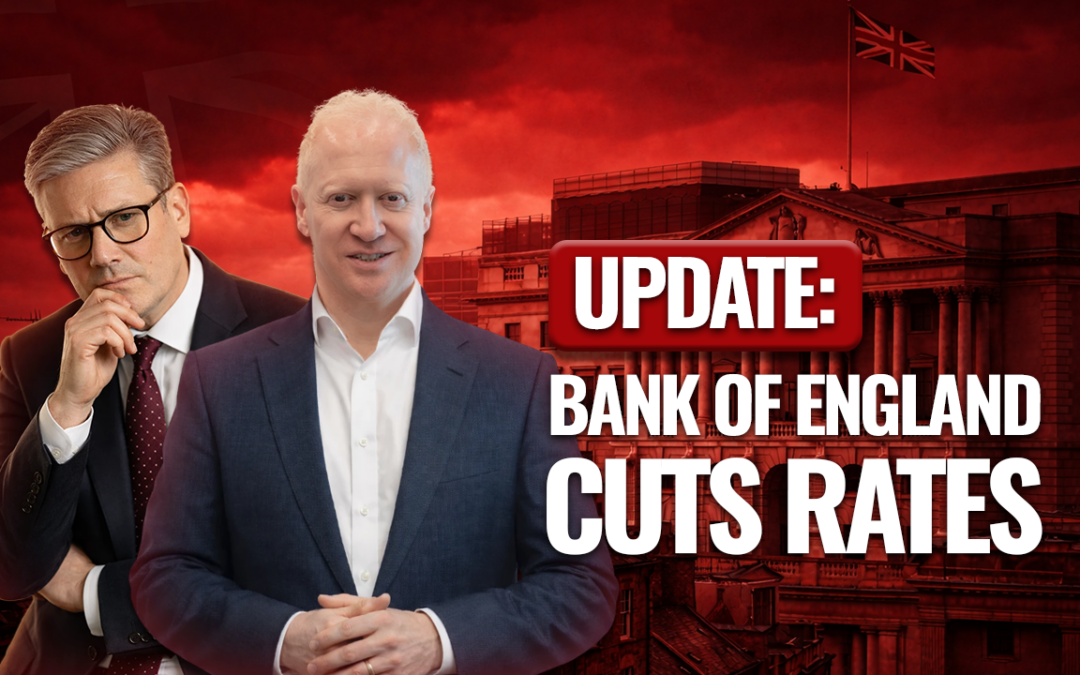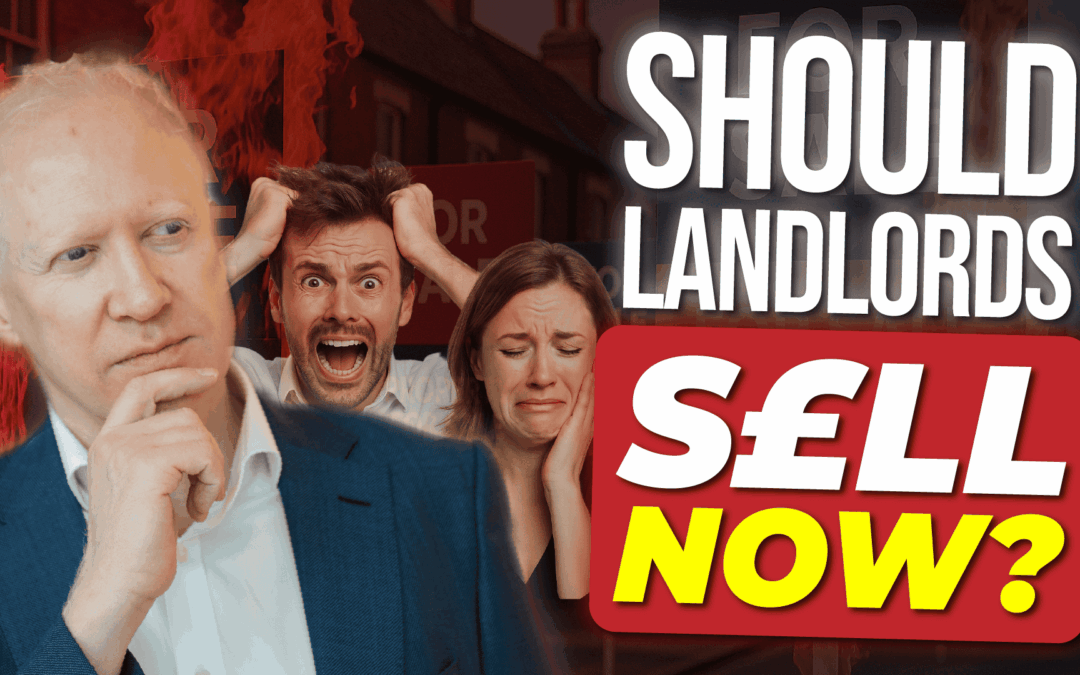In this blog I’ll explain how you can profit, using the BRRRR method otherwise, known as Momentum Investing. It is a classic strategy, you buy a property that is ideally below market value. It needs some sort of work doing to it. So that’s the B first of all, then you refurb that property. The idea is you might be replacing, kitchens, bathrooms, carpets, painting, or maybe doing a complete strip back to bricks or rebuilding the building. Then you refinance and the idea is hopefully you’ve added enough value, so that you can refinance and take most of your money out. You can then finally rent the property out.
So it’s really important when you’re doing this, to check that the end rental income is going to be enough to cover the higher mortgage once you’ve refinanced. Then you repeat this process and go get your deposit back. You go and buy another property. This is the way many of my Property Mastermind students spike rapidly build their portfolio.
Using the BRRRR Strategy in a Cyclical Property Market
You see most people when they invest in property they go and find a property. They put their money in their deposit and then they sit back and wait. They wait for the property market to come up over time which it does because in the UK we live in an Island with a limited supply of accommodation and an increasing population. So as we know, the long time trend of property prices is to go up. Now we know property prices don’t always go up. Sometimes they go up. Sometimes they come down, it’s a cyclical market, just like any other market.
You have to be a little bit careful when doing this strategy. It’s great in a rising market. But If a market’s coming down, there’s a risk. The risk is that when you go for your refinance, because the market has come down, you might not get a valuation as high as you want. Therefore you may not be able to bring all of your money out. So does this mean you shouldn’t do the BRRR method when the market’s coming down? Not necessarily. You just have to be prepared that you may not get all of your cash out.
Does that mean it’s a bad deal? If we leave money in, not at all. A lot of people say, “Oh I can do this deal”, but I’m going to have to leave 20 or 50,000 pound in the deal and say I’m not going to do it for that case. They only want to get all of their money out. I understand that but the reality is you can’t always get your cash out.
What is important to do is look at how much money is left in the property and what Return On Investment you are getting. Let’s say you borrowed money in the first place to buy this property. You might’ve got a mortgage. You borrowed money to put in this deposit. You might’ve even borrowed money for the refurb cost. You then want to get that back to that investor. This could be a private individual, a family member, or a friend, who’s got some spare money in the bank or in that business, doing absolutely nothing for them right now. You can help them get a great return on their money by helping you to do your property investing.
A lot of people think well, okay, if that person puts money in, I have to get all of that money back to them from this particular property. But that’s not always the case. You’re probably going to have a number of properties and you might want to refinance some of those. You might have some properties where you’re buying / refurbishing and you’re selling instead of renting, that’s called a property flip. Again, maybe not such a good strategy to use when the market’s coming down, but in a rising market, flipping property is a great strategy.
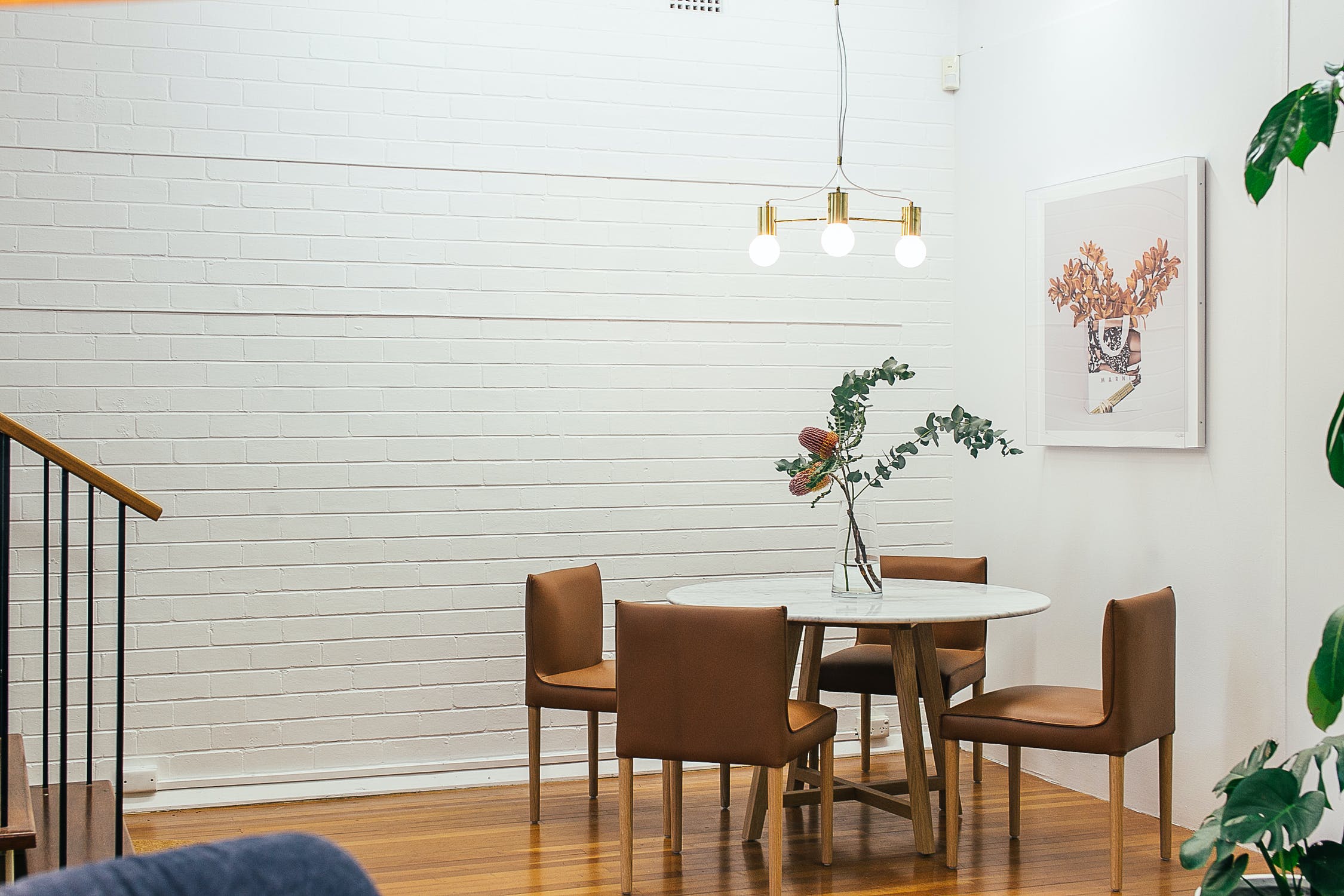
If You Can’t Get All the Money Out It’s Not a Bad Deal
So what does this actually mean for you? It means that you might leave some money tied up, but does that really matter? If this person is lending you the money and they only get half their money back, would that be okay? If they’re still getting a great return on their money, they might still be happy with that.
If I was ever working with someone’s money I’d explain to them the risk is, I can’t get all the money back. It might be tied up for longer. Are you okay with that? Some people might say, no, no, I absolutely need my money back so I’ve got to get that money back within a time period. In which case they may not be the best person to use for this project, If you don’t think you’d get all the money back.
They might say, actually, if I keep getting a return of the money I’m leaving with you, I’m really happy to leave some money there. So it’s all about communicating, with the person who’s helping you finance this deal in the first place to see if actually they might be happy to leave somebody there. But if they do need all the cash back, does that mean you can’t do the deal, or you can’t find another investor who’s happy to leave their money in a for a long time. Someone who doesn’t need it for three or five years. You could use the first investor to buy the property to do the work. If you can’t get all the money back to them, the second investor can come and replace the first one. The first investor then has all their money back, the second investor is happy to leave their money in whilst getting a really good cash flow return on the investment they’re making. That’s kind of what you need to understand. It’s really important to recognise that, if you can’t get all the money out doesn’t mean it’s not a good deal. It all depends on the Return on Investment or the money that’s left in. So how do we work that out?
“This is why it’s really important when you’re investing in property to understand the numbers. You need to work out how to calculate the Cash Flow and how to work out the Return on Investment.”
The Return on Investment & the Money That’s Left in
We look at what’s the rental profit. How much money is this property going to make us every single month? Let’s say it’s going to make us a thousand pounds profit a month. Maybe it’s a good HMO, thousand pounds a month, which might make us 12,000 pounds a year. Now let’s say you have to leave 24,000 pounds in the deal. You can’t quite get all the money and a lot of people would walk away saying, well I’ve got only 24,000 in, I don’t have that money. But let’s look at the numbers.
So the profit is 12,000 a year and say we’ve 24,000 in, what’s the return on investment on that 24,000? We take the annual profit 12,000 divided by the money left in 24, then we multiply all of that by 100 to give us a percentage. The calculation is 12,000 over 24,000, which is 0.5 times a hundred, meaning there’s a 50% Return on Investment. I’ve seen people walk away from deals because they have to leave this kind of money tied up saying, that’s not a good enough deal. But if you said would you do a 50% ROI? Which is this, “oh yeah, all day long”. This is why it’s really important when you’re investing in property to understand the numbers. You need to work out how to calculate the Cash Flow and how to work out the Return on Investment.
There are so many investors I meet who don’t know how to do these fundamental things. They’re making decisions based on bad information. Now, remember if we’re renting this property out we need to make sure that there’s demand in the area for this type of property. We need to make sure that the rental income coming in is going to be more than enough to cover the mortgage, when we do our refinance, that’s really important. People often look at the mortgage they get when they first buy and think, yes, the rent will be enough. They make a mistake because they don’t realise when they refinance, the mortgage is going to go up, so you can get some of the initial capital back. It’s really important to check that.

Posing as a Tenant
I always recommend speaking to local letting agents to check what’s the demand in the area for this type of property and how much rental income can you realistically get. Sometimes letting agents might inflate the amount that they think you could get. They want you to put the property with them, in the hope that you’ll achieve high rent. A great way to test the true market rent in an area is called a letting agent posing as a tenant. Let’s say this is a three bed property and you want to know how much it might rent for. You call an agent, they might say, “we can rent that for 800 pounds for you.” You go online and sure enough, there are properties are available at 800 pounds. If you call up posing as a tenant and say “I’ve seen this property which would be a different one online for 800 pounds, can I ask, do you have lots of these? They might say no, no. These go really quickly, but maybe 800 to rent.” Let’s say there were lots of them on the market. And you could say “I know the rent’s 800 but have you got any landlords who might be a bit flexible? I can only really 400 to 750. If they’ve got lots of property on the market they might say, let me speak to the landlord. They might be happy and a landlord might be okay to take that. iF that’s the case it means the rent’s not actually 800 it’s 750 because properties available at 750. So by posing as a tenant, you can get a really good idea of what the actual rent is in that area for that type of property.
Repeating to Build a Property Portfolio
The final thing is repeat, the idea that if you want to build a portfolio, rather than buying one and leaving your money there. This is a way of adding value. Taking out the equity and going to buy another property and quickly building your portfolio. The theory is, each of these properties you’re renting out should more than cover the cost of the mortgage and give you a cash profit. I discovered this back in 1998 as I moved out of the the first house I bought back in ’95 and buy a house closer to Cadbury’s while I was working at the time. But instead of selling my first house I held onto it and I started renting it to students who were going to Birmingham University. AI realised that the rent coming in each month was more than the mortgage, the management and maintenance fees etc. So each month I had a little bit of money left over. It was like owning my very own cash machine. I thought it was so good, I’m going to buy more, and that’s what I did. By 2001, I had enough to leave my full-time job. I hadn’t completely replaced my income at that point but I had enough to cover my living expenses. I thought, well, I don’t have to go to work. So why would I do that? It took me a couple more years by 2008, to completely replace my income. In total it took me eight years to do it, but I was doing it on my own. I was doing it the hard way. You don’t have to do that.
There’s so much education and training. There are so many blogs on the pin website and I really recommend you read some of the other blogs and learn how you can build your portfolio by learning from other people, rather than doing it on your own.
If I’d have learned this in the early days I would have been able to grow my portfolio much quicker. I now teach people on my three-day Mastermind Accelerator programme then on my year long Mastermind programme. We have students who replace their income as quick as eight months.
It took me eight years to do by using this strategy I call it momentum investing. Many people refer to it as the BRR or the BRRR method, but that is the common term that many people are using these days. So make sure you understood the strategy and see how powerful it can be if you use it in your investing. Remember to invest with knowledge, invest with skill.

